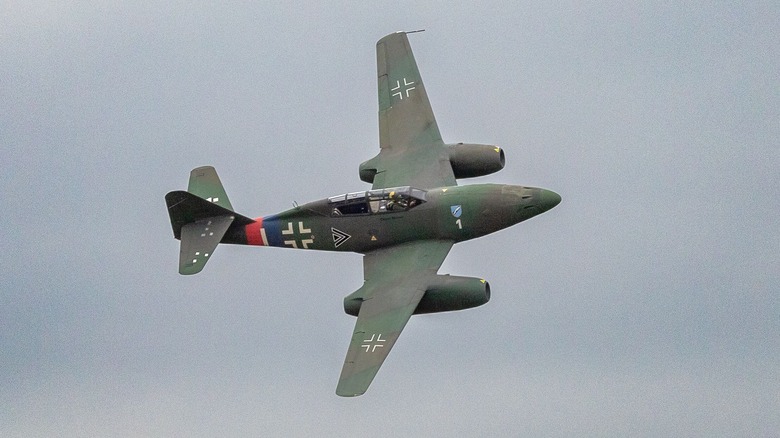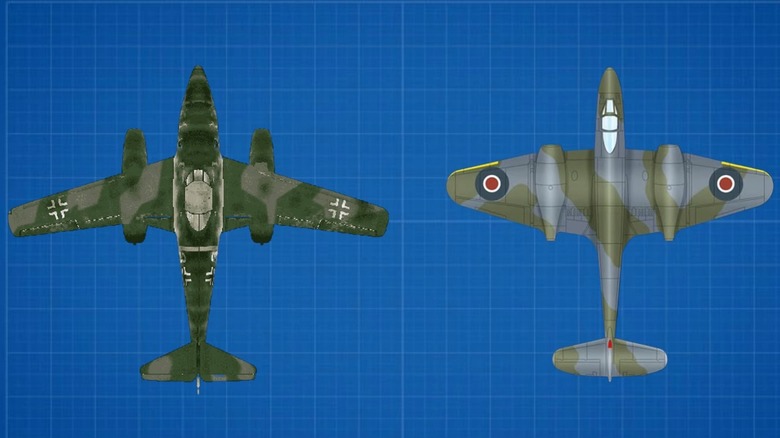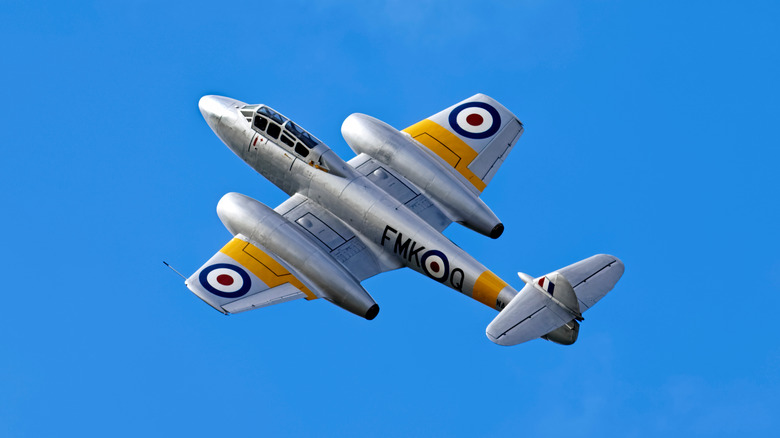Me 262 Vs. Gloster Meteor: Which First Fighter Jet Was Better?
World War II was kicked off in late 1939, and at this time, jet fighter aircraft were still in the experimental development phase. The Allies were using single-seat piston engine fighters like the Hawker Tempest or one of several top WWII fighter aircraft. The jet age started in the late 1930s and early 1940s with the flight of some of the first aircraft using turbojet technology.
In addition to aircraft advancements, World War II accelerated computer technology as well in a race to outperform the adversary. The Luftwaffe had been working on an advanced jet fighter since 1939. However, it wasn't operational until 1944. The German Messerschmitt 262 was available in two variations, the A-1 Schwalbe and the A-2 Sturmvogel. The Schwalbe (Swallow) was used for defensive operations, while the Sturmvogel (Stormbird) served as an attacker with bombing capabilities.
Fortunately, the Allies weren't far behind with the Gloster Meteor prototype (DG206/G), taking to the air for its first official flight in early 1943. There were well over twenty variants of the Meteor, with the F.8 version reaching the highest production numbers and being utilized by eight additional countries. The 262 Swallow and Meteor F.8 featured different wing designs and capabilities. The Me 262 had four 30-mm MK 108 cannons, while the Meteor had 4 20mm cannons. It's unclear which jet fighter would've prevailed in a face-to-face dogfight. Variables such as pilot skill make this match-up a challenging one to call either way, as these two aircraft never met in combat.
Wing design, engines, and speed
The wings of the Me 262 are angled backward, looking much more modern than those of its rival. Popular Mechanics explains, "By angling the wings of an aircraft toward the rear of the plane, the airflow over the top of the wing is reduced. The plane can then fly faster without generating shockwaves on the wings." The cockpit is located further back on the 262, directly between the wings, providing a more broad nose at the front. The Swallow variant used the Jumo 004 turbojet engine.
In contrast, the Allied Meteor placed the cockpit ahead of the wings, with a short nose. The Gloster Meteor had more traditional wings of the time, which were larger and rounded at the edges. The F.8 variant featured two Rolls-Royce Derwent 8 jet engines that were wider than the Swallow in design and sat directly in the middle of the wings instead of underneath.
The Me 262 Swallow had a shape ideal for speed, but the Jumo 004 put out 1,980 lbs of thrust. This thrust translated into a top speed of 540 mph, while the Meteor F.8 could manage 598 mph. Although earlier initial versions of the Gloster Meteor weren't as fast as the Me 262, later versions like the F.8 used much more powerful engines that would've theoretically oupaced the Axis jet.
The Meteor flew higher
One of the advantages the Allied jet fighter had over its German rival was in maximum altitude. The Me 262 Swallow couldn't fly over 37,565 feet, whereas the Meteor could reach over 43,000 feet. Altitude is one factor that could've aided the Allies against the Me 262 Swallow if the two had ever come into contact during the war.
The Meteor never faced the Me 262 in combat due to its role in flying over the U.K., taking out German bombers. In fact, the Gloster Meteor stayed close to home during World War II due to fears the aircraft's capabilities or technology would be revealed to the enemy.
Meanwhile, over 1,000 Me 262 Swallows were produced, but only around 300 ever saw combat. However, it was quite lethal. According to U.S. Naval Aviation History, "Despite its short time in combat, the Me 262 had proven superior to all Allied fighters, accounting for 542 Allied aircraft destroyed while losing 100."


